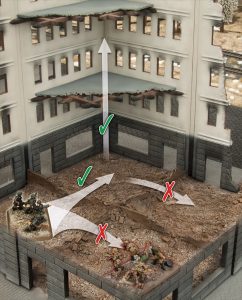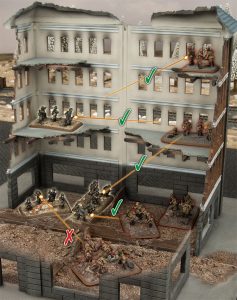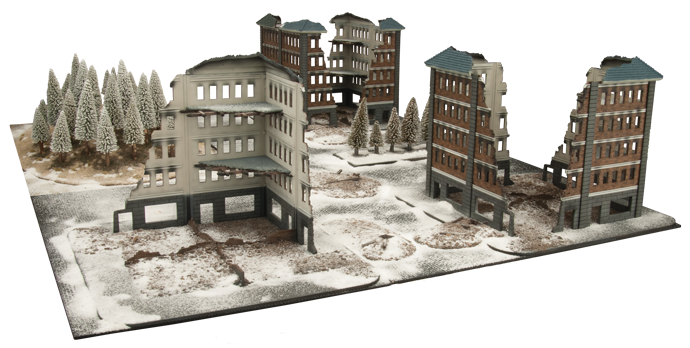with Mike Haught
We originally published this article during the Enemy At The Gates Live Launch, but it is still relevant today with the launch of the Bagration: Soviet book. Whenever Mike talks about Stalingrad you think of the cities throughout Poland that were fortified and turned into defensive positions by the retreating German army as Operation Bagration relentlessly marched on…
From the very start of the Eastern Front projects we knew that urban combat was an essential part of the story of Stalingrad and wanted to include some city fighting rules. We also knew that city fighting generally comes with some barriers to entry, so we carefully marked out some design considerations to make city fighting accessible and fun.
- We wanted to make sure the rules played fast and focused on the action.
- We wanted the narrative to focus the action on one or two key buildings.
- We wanted urban table set ups to be achievable for the average player
- We wanted to give players the ability to play city fighting games practically anywhere.
Streamlined Rules
Often city fighting rules games can take a lot of time and effort to use and detract from the fun. The terrain causes strange situations, raises questions, and generally adds a lot of administration time when you’d rather be just throwing grenades into rooms before storming it with flame-throwers and submachine-guns. So we wanted to focus on what matters in city fighting and tried a lot of things out.

Key Buildings
When you read about Stalingrad, the stories you see are about key buildings like the Grain Elevator, the Red October Factory, or Pavlov’s House. The buildings were as much a character in these fights as the soldiers themselves, shaping the fight as well as the battle’s final outcome. We included four special missions in the Stalingrad books that let you recreate these fights. While they draw inspiration from actual fights for Stalingrad buildings, the missions are intentionally designed so that you can use them at any point in the war so you can use them for battles set in places like Leningrad, Arnhem, Cologne, Berlin, or even more remote urban areas like Tobruk.
Achievable Tables

Kitchen Table Gaming
The nature of city fighting is that it takes a lot of troops fighting in a small area to get the job done. Every level in a building effectively doubles the gameplay space below it, so you can fit a lot more troops in a square foot than you would on other tables. This means that you can still use a normal sized force on a much smaller table, which opens up an interesting possibility. The urban fighting missions are designed for a 2’x3’ (60x90cm) table, so you can play a game of Flames Of War wherever you have a table that size. For me, that includes my coffee table in my lounge or my dining room table. (Pro tip, make sure 19 month old children are properly stowed before using this product within 24”/60cm of the floor.) So if you’ve got that friend that you want to introduce the game to, here’s a set of missions that you can use at your home to push them over the edge.

Want to try out the new City Fighting rules for yourself?
City Fighting Rules PDF (right click, save as)…
~Mike

